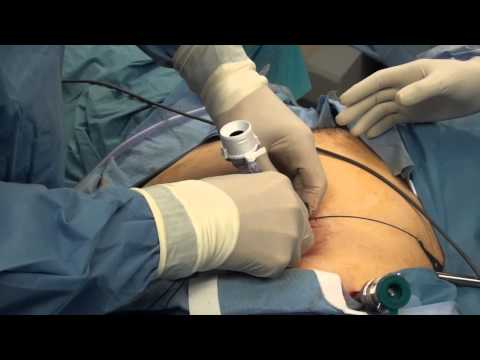
According to a study published this week in the Journal of the American Medical Association, the power morcellator, a surgical tool used in about 50,000 hysterectomies a year, may spread cancer. In a power morcellation procedure, a device cuts uterine tissue into pieces that can be removed through small incisions made during minimally invasive surgery, […]
 According to a study published this week in the Journal of the American Medical Association, the power morcellator, a surgical tool used in about 50,000 hysterectomies a year, may spread cancer.
According to a study published this week in the Journal of the American Medical Association, the power morcellator, a surgical tool used in about 50,000 hysterectomies a year, may spread cancer.
In a power morcellation procedure, a device cuts uterine tissue into pieces that can be removed through small incisions made during minimally invasive surgery, The New York Times reports. Morcellation is also used to remove fibroid tumors. But recent reports indicate that when a morcellator slices into cancerous tumors the doctor didn’t know existed, the cancer cells can be spread through the woman’s abdomen. And the JAMA study found that undetected tumors are more common than many experts had thought.
In April, the Food and Drug Administration (FDA) issued an alert discouraging the use of the procedure and this month held hearings to evaluate morcellation. The Times explains that surgeons are taught that cancers or potentially cancerous tissue should be removed whole and not broken up or cut, to avoid spreading the cancer.
In their analysis of an insurance database of hospitalizations nationwide from 2006 to 2012, the researchers found 232,882 minimally invasive hysterectomies using various techniques; 36,470 of the women had power morcellation. Lead author, Dr. Jason D. Wright, chief of gynecologic oncology at Columbia University’s medical school, said that 99 of the women had uterine cancer that was detected after the hysterectomy, meaning that one in 368 women had a cancerous tumor that risked being spread if a power morcellator was used, according to the Times.
Previous estimates of undetected cancer ranged from one in 500 to one in 10,000 cases. But a recent FDA analysis estimates that one in 352 women undergoing hysterectomy or fibroid removal have sarcomas, which are aggressive, hard-to-detect cancers. Age was the biggest risk factor for the uterine cancers, with a steep increase from age 50 to 65 and older, according to the Times. At Boston’s Dana-Farber Cancer Institute, a review of cases found that cancer spread significantly faster after morcellation than after abdominal surgery to remove the uterus.


